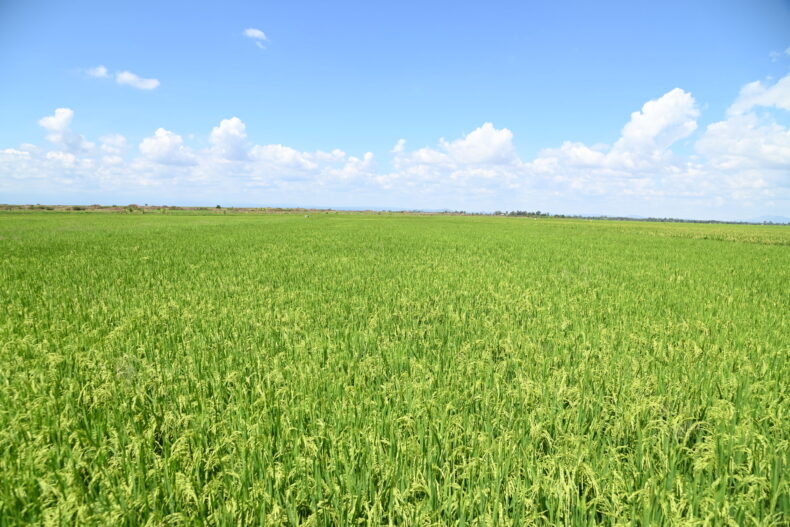Komboka rice to put in check cheap imports that thrive on the name of pishori variety

Komboka rice to put in check cheap imports that thrive on the name of pishori variety Kenya imports hundreds of thousands tons of cheap rice particularly from Asian countries, and according to rice business experts, most of it find its way to cereal shops where it is sold at premium prices in the name of ‘Pure’ Mwea Pishori. “Many people buy rice from different stores, and some of them get it from Mwea, thinking that they are buying pure Mwea Pishori,” said Antony Waweru, the CEO, Mwea Rice Growers Multipurpose Co-operative Society, which brings together over 700 rice farmers in the area. “The truth is that a very small population consumes pure pishori, while most of Kenyans are fed on cheaply imported rice, but blended with small portions of Mwea pishori just to give it the desired aroma,” he said. Pishori is a rice variety officially known as basmati, and whose origin is pakistan. In Kenya, it grows well in Mwea, Kirinyaga County.
Rice lovers say that Mwea pishori rice is the best quality ever in the country based on its natural sweet taste and the unique delicate aroma. It’s long grains and a fact that the grains do not stick together after cooking makes it a recipe for the royals, many times served on the high table while the lower cadres are fed on other varieties. “It is the most sought after rice variety, making it more expensive than other varieties,” said Waweru. “It is due to the high prices that unscrupulous traders blend it with cheaper imports so as to introduce the aroma, thereby deceiving unsuspecting customers,” he told the Seeds of Gold. However, despite the high demand, pishori is a late maturing rice variety and yields far less than other varieties, hence increasing the gap for the demand.
To fill this gap, the Mwea Rice Growers Multipurpose Co-operative Society in collaboration with the Kenya Agricultural and Livestock Research Organisation (KALRO), the County Government of Kirinyaga, the Alliance for a Green Revolution in Africa (AGRA) and Kilimo Trust have joined hands to introduce a new variety known as komboka, which has most of the characteristics of pishori, but mature 15 days earlier than pishori, and with higher yields.
The organisations came together deliberately through a project known as Competitive African Rice Initiative in East Africa (CARI-EA) with financial support from AGRA, whose aim is to enable locally produced rice in East Africa to competitively substitute the current over Sh30 billion worth of rice imports to the East Africa Common Market. “Komboka is the game changer,” said Gabriel Ochieng from Kilimo Trust. “The variety which was locally developed by KALRO plant breeders has higher number of tillers, uniform crop stand, even in maturity, aromatic almost like pishori, higher yields, easy to thresh, longer panicles, less affected by diseases such as Blast, appealing grain type, early-maturing, good plant height and no lodged hills.
According to James Waweru Ngure, a smallholder farmer from Wamumu section in Mwea Scheme, the variety yields twice as much as pishori. “Komboka matures with the pinnacles facing down, thus protecting itself from attack by pests like quelea-quelea birds, which are a big problem in this area,” said the farmer. With its long grains, Ngure says that it competes effectively with imported rice. “It comes with its original aroma, and therefore you do not need to mix it with pishori,” said the farmer. According to Waweru, komboka yields four to five tons per acre, which is far higher than pishori, which yields between two and 2.5 tons with good agronomic practices.
According to a report by AfricaRice, rice has now become the fastest growing food staple across the continent. “Since the early 1970s rice is the number one source of calories intake in many parts of Africa and comes third after maize and cassava on the continent,” reads part of the report. However, most countries in the Sub Saharan Africa region still import rice from Thailand, India, and Pakistan among other Asian countries. “It is unacceptable that 80 percent of Kenya’s rice is imported, when we have all the potential to produce it here,” said Dr Florence Wambugu, Chief Executive Officer of Africa Harvest during a past event in Nairobi. The Komboka variety has already been introduced in other schemes within Nyanza region and Bunyala in Weastern Kenya. “Since it is high yielding and fast maturing, its price is far lesser than Pishori, which makes it an effective competitor with cheap imports,” said Ochieng’ of Kilimo Trust.













